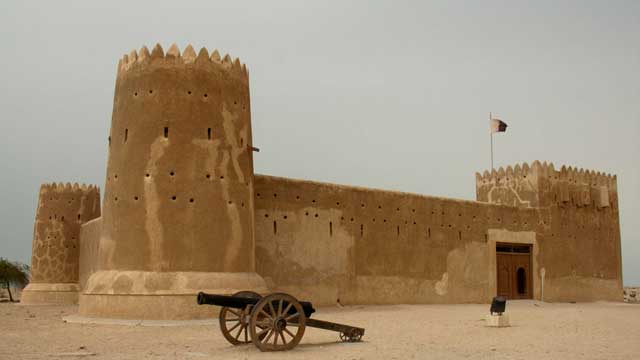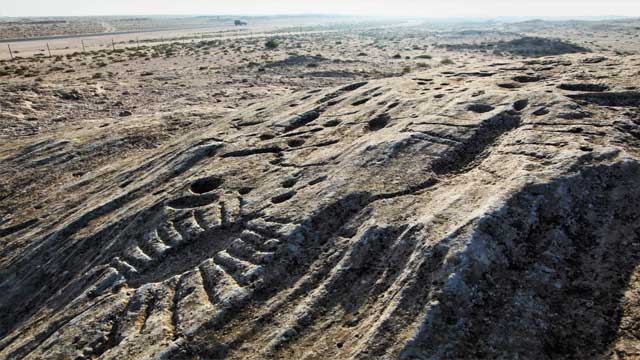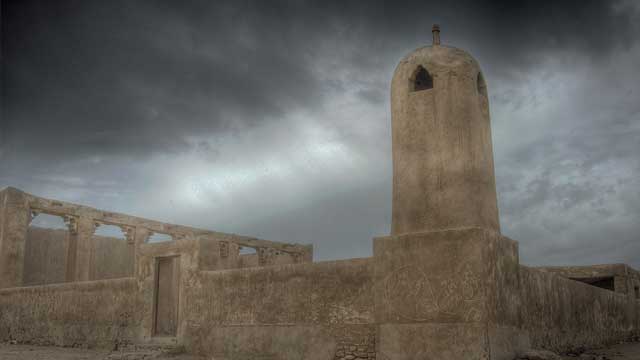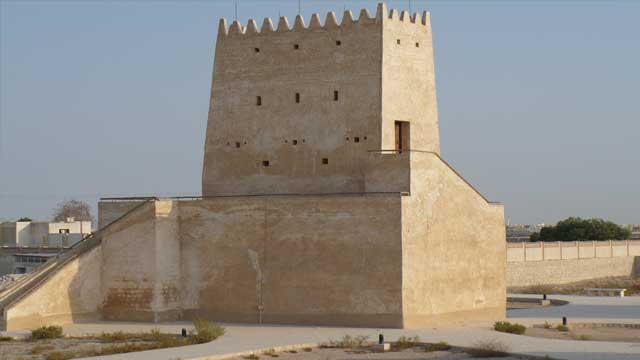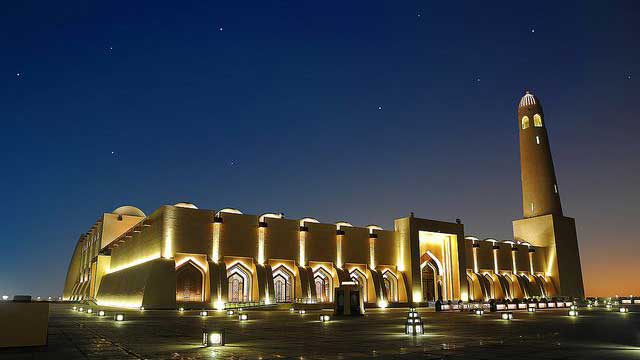House of Sheikh Ghanim bin Abdulrahman Al-Thani
Majid bin Saed Al-Saed, one of the most important pearl merchants in Al-Wakra, built this beautiful and unique house at the beginning of the 20th century. Used to produce 'debis', which is a traditional date-based food, and also to sell and store merchandise, the residence was purchased by Sheikh Ghamin bin Abdulrahman AlThani in 1960.
It was in the four rooms on the ground floor that the 'debis' was produced. Called 'madabes', these rooms have parallel channels sunk 10-centimeters deep into the floor. These channels are linked together by a perpendicular canal near the entrance that connects to an underground pot in the corner.
In the process of making the 'debis', palm fronds were laid on the channels to create a smooth, flat base. The dates were then put in sacks made of palm leaves and stackedin piles up to two meters high. The weight of the upper sacks squashed the dates in the lower sacks, and their thick juice ran into the channels where it was collected and
funnelled into the underground pot.
In Bedouin societies, 'debis' is mainly used as a dressing for rice and fish. A few small shops still sell them today.
The rooms in the house that were not used to make 'debis' were used to sell a diverse range of merchandise, including pearl diving equipment.
The house's water supply came from a well in the courtyard. This large space was also used to store merchandise for sale. One of the corners of the courtyard has a staircase to a wide terrace on the upper floor that features a spectacular view of the nearby seashore, where mangroves form the basis of a fascinating ecosystem.
A 'majlis' that was used by the first owner to receive guests and business partners is situated on the south side of the terrace. The 'majlis' rooms were carefully planned to balance the welcoming character of Qataris with the privacy of their family. For this reason, the building has a separate entrance to the 'majlis' on the south side that kept visitors from walking through the ground floor and disrupting the privacy of the owner.
'Badjeer,' or traditional Qatari air traps, were used to provide the house with natural air conditioning. The system was based on the construction of two parallel walls: one standing from the floor to halfway and the second hanging halfway down from the ceiling. The walls would overlap by 10 cm, with breathing room left in between.
Although this method shelters the rooms from an external view, it allows wind to enter the house without dragging in any sediment. When necessary, the space between the two wall panels can be closed with a wooden shutter.
On the top of both the 'majlis' and the mosque, traditional 'marazims' protect the walls. These wooden channels stretch out from the roof to drain rainwater away during the desert's rare but heavy storms.
The thick walls, which help isolate heat and keep the house cool, were built by overlapping raw pieces of coral rock and limestone. The roof was finished with a layer of compressed mud, further protecting the house from the sun during the hot
seasons.
It is possible to see these building techniques in greater detail either through a visit to the fishermen's villages in the northwest or by viewing the 3D model of the Qatari mosque.
Many older residents of Al-Wakra remember when Majid bin Saed Al-Saed fitted the 'majlis' with the first radio in town. Often people would gather together in the room and listen to the news.
This house is located within an old district of traditional buildings that Qatari authorities have started to restore.
Planning a visit
Visitors can enter the house 24-hours a day. Just ask the guard, who will be happy to let you in and explore the site on your own. To double check the opening hours, call the Restoration Department at 4429 1711, Sunday through Thursday, from 8:00 to13:00 hrs.
Besides visiting the house of Sheikh Ghanim, we recommend going to the nearby fish market, where you can buy different kinds of fresh fish and have it cooked for you in one of the shops.
Traditional Qatari fishing boats called 'dhows' bring thiscatch to the harbor early each morning. Enjoy your food by the seaside and then go explore the mangroves. In spring and autumn, at sunrise and sunset, you may see migratory birds such as 'malek al-hazin', or herons, and flamingos.
Additional nearby attractions are the Abu Manaratain mosque and the childrens' playground. You can also buy refreshments and snacks near the house.
UTM coordinates N 25° 10' 20.48" E 51° 36' 39.93"
Address:
The building is located in Al-Wakra, 13 km south of Doha. Go to the Doha International Airport and take the road to Mesaieed. When you reach Al-Wakra and the Shells Roundabout, go to the next roundabout and make a U-turn. Take the first wide road on your right, called Al-Mathaf, then turn left at the roundabout into AlSeef, and drive along the coastline for approximately 100 meters until you see thehouse on your left.





